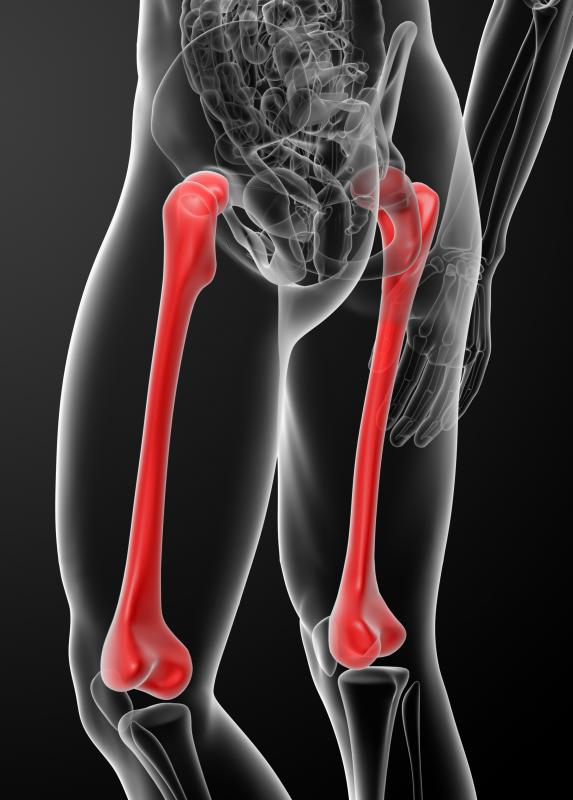At WiseGEEK, we're committed to delivering accurate, trustworthy information. Our expert-authored content is rigorously fact-checked and sourced from credible authorities. Discover how we uphold the highest standards in providing you with reliable knowledge.
What Is a Leg Bone?
A leg bone may refer to any one of the four bones that make up the human leg. These are the thighbone, knee cap, shinbone and calf bone. They include the longest and strongest bones in the body. This is necessary because, together with the muscles, joints and tendons, the leg bones allow for standing and walking.
The thighbone, or femur, is the biggest leg bone and joins the hip to the knee. It is also one of the strongest bones in the body. This is unsurprising, as it holds the weight of the entire upper body. The femur connects to the hip and is surrounded by a complex system of ligaments and muscles which allows movement.

The patella, or knee cap, is the smallest leg bone. It is a triangular piece of bone located over the joint connecting the thigh and the shin. It is also surrounded by tendons and muscles which both stabilize the legs and allow for movement. The knee cap protects the knee joint.
The lower leg consists of two long bones between the knee and ankle, the tibia and fibula. The tibia, or shin bone, is the second largest leg bone and is at the front of the leg. It is slightly differently shaped in men and women. Men's tibias tend to be straighter, while women's are slightly slanted, allowing for their wider hips. The fibula, or calf bone, is the slightly thinner bone situated at the back of the leg.

The leg bone, like all bones in the body, is made up of four main layers, all of which are constantly working. The outer layer, or periostium, is the thin layer which contains nerves and blood vessels. Beneath this is the compact bone layer, which is the really hard, strong layer of established bone. Under the compact bone layer is a more spongy layer of cancellous bone and the bone marrow. This is a jelly-like substance whose main job it is to make blood cells.

Taking all of this into consideration, it is clear that the leg bones play a vital role in the functioning of the human body, not only for movement but also playing a role in more intrinsic functions such as the production of blood cells. While the bones of a skeleton may look dead, they are actually growing and functioning all the time. A complex system combining muscles, nerves and tendons allows for humans to move freely.
AS FEATURED ON:
AS FEATURED ON:














Discuss this Article
Post your comments